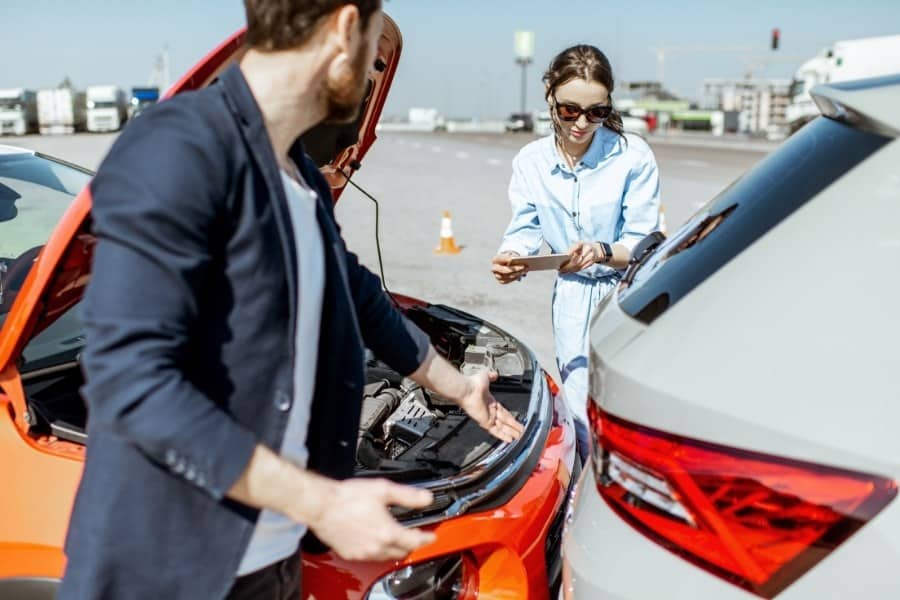Common Roadside Accidents and How to Handle Them
While everyone hopes to have safe journeys, it’s still prudent for vehicle owners and drivers to be prepared for unexpected situations like road accidents.
Adopting a proactive stance on these matters is a smart way to ensure your safety and those of other people while you’re traveling.

Common Roadside Accidents
At the same time, by preparing for potential emergencies, you’re equipping your future self with the essential tools and knowledge to respond properly to such situations.
With all that being said, below are some of the most common types of roadside accidents and how you can handle them.
Vehicle Breakdowns
Vehicle breakdowns can happen unexpectedly and lead to disruptions in your daily commute.
These breakdowns may result from various factors, including mechanical failures or running out of fuel.
To prepare for breakdowns, keep your vehicle in good shape with regular inspections and servicing.
It’s also a good idea to get the contact details of a reliable car parts supplier that can immediately provide you with replacement parts in such situations.
Additionally, carry a roadside emergency kit that includes items like jumper cables, a flashlight, basic repair tools, and essential supplies.
Joining a roadside assistance program can also provide peace of mind.
In the event of a breakdown, switch on your hazard lights, steer your vehicle to a safe location if possible, and use warning triangles or cones to alert other drivers.
These preparations ensure you can handle breakdowns efficiently and with minimal stress.
Fender Benders and Rear-End Collisions
Fender benders and rear-end collisions are among the most common accidents on the road.
These accidents typically happen when a vehicle fails to stop in time to avoid colliding with the vehicle in front, with the usual culprits being sudden stops and distracted driving.
Prevent such accidents by always maintaining a safe following distance from the vehicle ahead.
This space should allow you enough time to react if the vehicle in front suddenly stops.
Staying alert and avoiding distractions, such as texting or adjusting the radio, is essential while driving.
Moreover, regularly check your rearview and side mirrors to monitor the traffic behind them.
Being proactive about your driving helps prevent accidents and ensures a safer and more stress-free daily commute.
If you get involved in an accident, check for injuries first and call emergency services if needed.
If no one is hurt, the next step would be to move to a safe location where you won’t cause further accidents or traffic congestion.
Then, exchange information with the other party and report the accident to the police, especially if there are injuries, significant property damage, or disputes due to the incident.
Tire Blowouts
Tire blowouts can be a frightening experience on the road and often result in a loss of vehicle control.
These incidents occur due to various factors, including underinflated or worn-out tires. Conducting regular maintenance is the best way to anticipate and avoid such an incident.
At the very least, check your tire pressure and tread depth at least once a month and before long journeys.
Also, check your vehicle’s manual for the recommended tire psi so you can maintain optimal operating conditions.
In the event of a blowout, stay calm, grip the steering wheel firmly, and gently steer in the direction you want to go.
Avoid abrupt braking, as this can lead to skidding. Once you’ve regained control, gradually slow down and pull over to the side of the road.
Deer and Wildlife Collisions
Collisions with deer and other wildlife are common issues in many rural areas, particularly during dawn and dusk when animals are more active.
To avoid this kind of accident, drive at a safe speed for the road conditions, especially in areas known for wildlife crossings.
Use high beams when it’s safe and legal to do so, as this can improve visibility and help spot animals earlier. In case you see an animal near or on the road, slow down and be prepared to brake.
However, avoid swerving suddenly, as this can lead to more significant accidents.
Collisions with large animals can cause substantial damage to vehicles and pose safety risks, so vigilance and caution are essential.
Should your vehicle collide with an animal, the first thing you should do is stop and check for injuries.
Next, report the incident to the authorities, as they may have to move the injured animal out of the road. Then, take pictures of the incident for insurance purposes.
Bad Weather Accidents
Adverse weather conditions like rain, snow, and ice can result in slippery roads and reduced visibility.
These conditions often lead to accidents due to reduced traction and longer stopping distances.
When faced with bad weather, adjust your driving speed to match road conditions and increase the following distance between your vehicle and the one ahead.
Also, ensure your vehicle’s lights and windshield wipers are functioning correctly to improve visibility.
During heavy rain or snowfall, use your headlights even during the day to make your vehicle more visible to others.
Assess the road conditions every now and then, too. If it’s too dangerous to keep on driving, pull over to a safe location, turn on your hazard lights, and let the weather calm down before proceeding.
Check road updates frequently to get a better picture of the situation and make informed decisions while traveling.
Understanding the potential road risks, adopting proactive driving habits, and knowing how to approach road incidents can make accidents more manageable and less disruptive.
Being an informed driver also helps you contribute to a safer road environment for all commuters.
By staying aware of these common road accidents and how to handle them well, you can approach each journey with confidence and resilience in the face of the unexpected.


